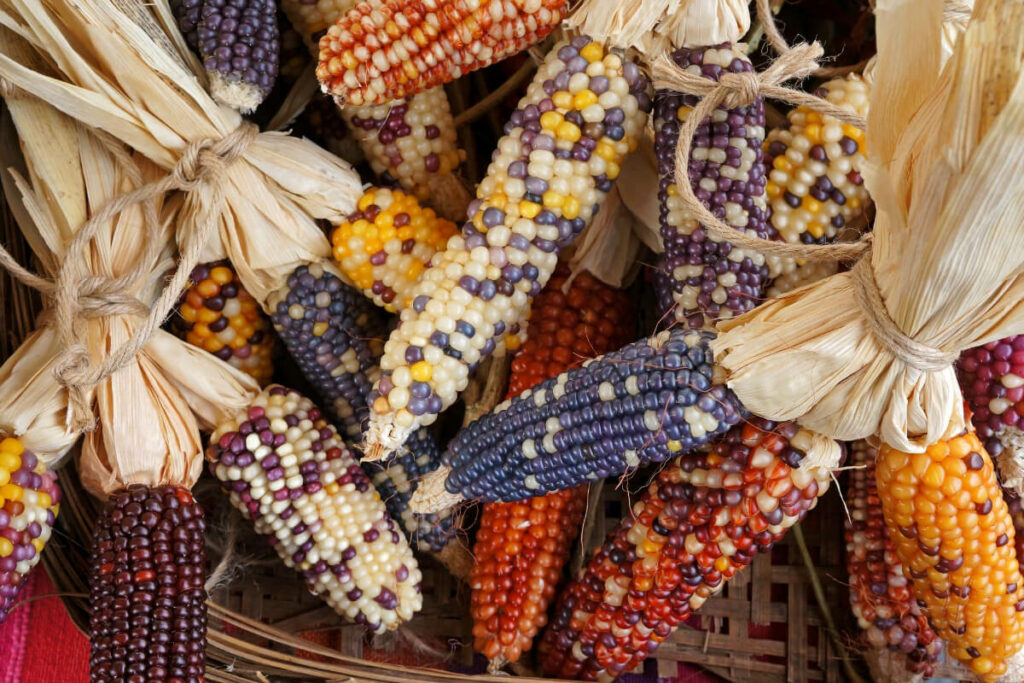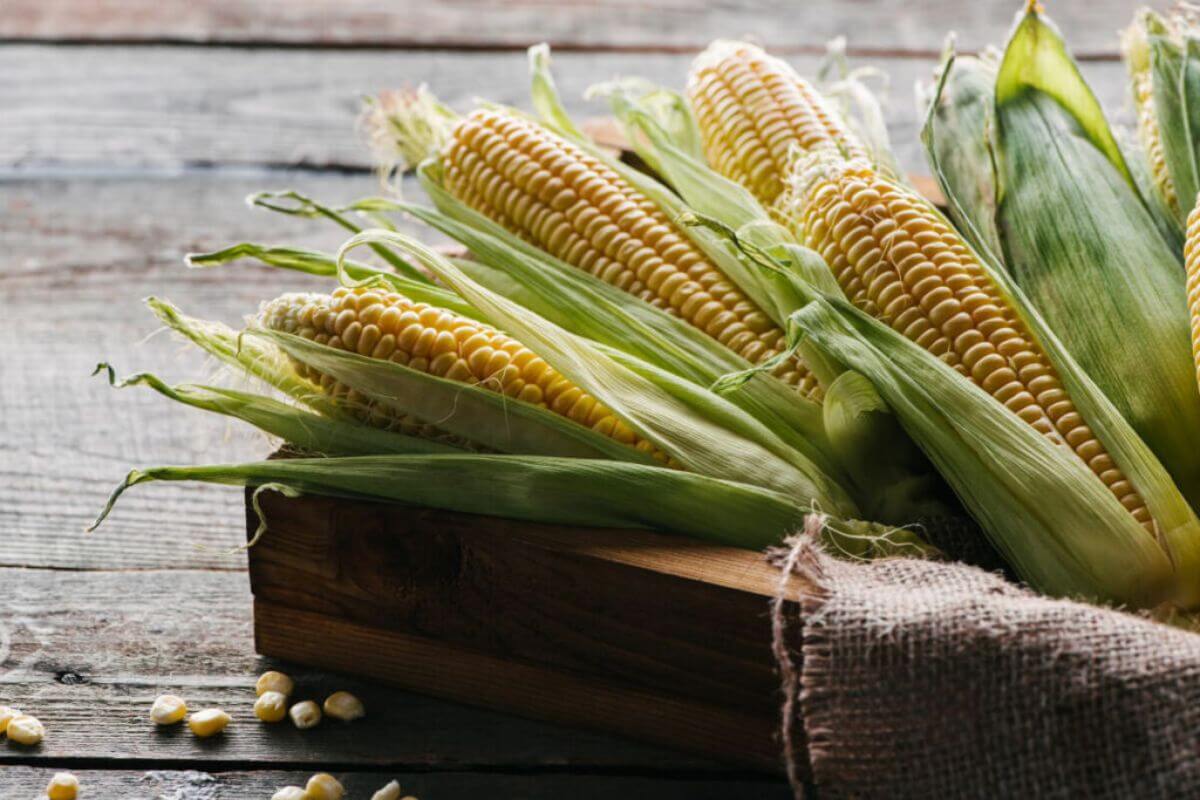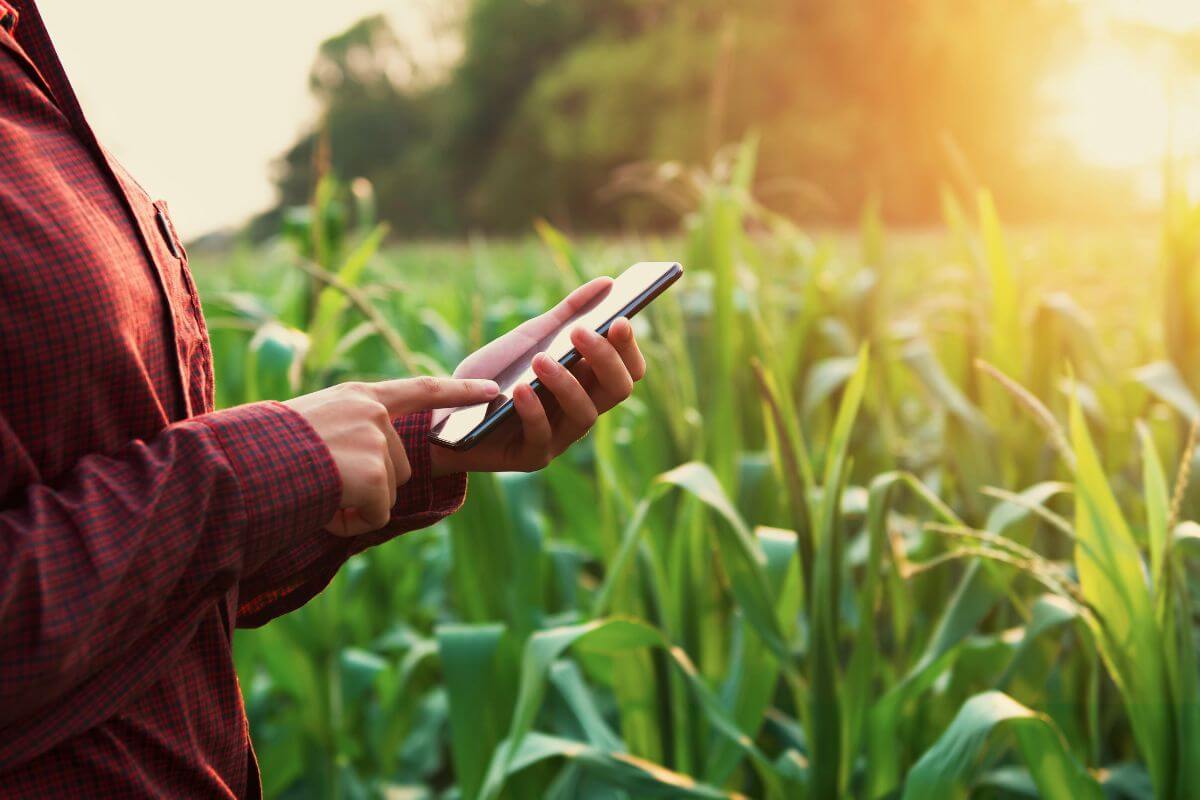Has it ever crossed your mind that corn may not be natural? That maybe it was created by man?
Corn is one of the most versatile vegetables on the planet and that’s all thanks to humans intervening with how corn has evolved. When did all this happen and how?
This article will cover corn’s history, how corn is man made, its uses, and more.
- Related Article: Other Man-Made Vegetables and Fruits
History of Corn

Corn, as we know it, does not exist in nature, and it will not grow naturally unless helped by human intervention. It’s thought that about 10,000 years ago, corn was first modified from its original form.
Corn is native to Mexico and belongs to the Zea genus, a member of the Poaceae family. Its real popular name is “Maize.” The first corn seems to have had the appearance of a seed head sitting on the top of a stalk of wheat.
Kernels were quite small and had a hull cover. It is said to have originated from teosinte, a wild grass. Teosinte did not have yellow kernels but smallish kernels that had space in between them as opposed to laying side-by-side in modern-day corn.
Teosinte was selectively bred to increase in size. Its structure was altered naturally through selective breeding until it became modern-day Maize or Corn.
Corn migrated to the southern United States thanks to Native Americans. As they moved throughout the south down to South America, they brought corn with them.
Then, when Europeans crossed the seas to colonize North America, they found corn and appreciated it.
When they returned to Europe, they brought corn with them and as such became a permanent part of European agriculture. Corn then spread to North Africa, Indonesia, and even China.
- Related article: Is Corn Vegetable or Fruit or Grain?
Is Corn Genetically Modified?

The answer to this question is generally “no” as corn was not genetically modified many centuries ago. However, there are some varieties of corn that is identified as a genetically modified organism (GMO), meaning it was created in a laboratory with genetic engineering.
The GMO process creates a type of plant that is not found in nature. Most genetic intervention is undertaken to improve a plant’s chances of surviving harsh natural environments and pests, herbicides, drought, and diseases.
What Is Selective Breeding?
“Man-made” refers to the process of “selective breeding.” Plants are bred to obtain and improve specific characteristics without the help of a modern-day laboratory.
Size, taste, and various characteristics were selectively bred for improvements using this process.
Selective breeding uses various methods to grow corn, including seeds, cuttings, layering, or grafting. A characteristic of selective breeding is how much time it takes to arrive at the desired result.
Often, it’s decades, centuries, or much longer because you need to grow generation after generation to get the desirable traits and types of corn plants you want.
Evolution of Modern Corn

Modern-day corn was achieved through the selective breeding of teosinte over long periods of time.
However, it is worth pointing out that quite a bit of today’s corn crop is actually genetically modified and is utilized for many food products, as well as animal feed in agricultural husbandry and even alcoholic spirits like whiskey.
As of today, it is thought that more than 12,000 corn species exist, but they are generally grouped into four classes:
- Field Corn – This type of corn is often ground into flour for processed and baked foods. It may also be dried and kept in storage or used in animal feed.
- Ornamental Corn – Products of cross-pollination, some corn varieties are used primarily for decorative purposes
- Popcorn – This is a variety of corn characterized by a very hard shell and is specifically used to make popcorn.
- Sweet Corn – Probably the most popular corn used for consumption and appreciated for its sweet flavor, tenderness, and juiciness.
Growing Corn
Corn is not able to reproduce itself. Kernels come with thick corn husks and cannot plant themselves. They require human intervention or machines to plant in the ground.
When it is planted in the spring, it requires soil rich in nitrogen and a consistently warm climate. In colder, damper environments, the corn plant will simply rot.
Corn stalks are susceptible to pests like beetles, fleas, and rodents among others, as well as to Stewart’s Wilt fungus. So, without the continued intervention of man, corn would not be corn, and mankind would lose an important food staple.
Today, the world’s top producers of corn are the United States, China, and Brazil.
Man-Made Corn Final Thoughts
Yes, indeed, corn was “made” by man’s intervention. This essential crop does not exist in the wild. Teosinte plants were bred for thousands of years and became one of the most important cereal crops in world history. Corn cannot survive without man’s intervention and without protection.
While corn initially was a product of selective breeding, its appearance on the global and historical food scene has stimulated repeated breeding in and out of laboratories to create numerous varieties for a wide array of purposes and has, in any case, become a primary and indispensable food staple for both humankind and animals.
Learn if these other fruits and vegetables are man-made or not:
Corn FAQs
How was corn made?
Corn was originally cultivated by Native Americans who used it as a staple crop. Corn was first domesticated in Mexico around 10,000 years ago. It was then brought to Europe, Asia and other places around the world. Today, corn is still a major source of food worldwide.
Is corn a fake vegetable?
Corn on the cob, the whole corn, is a real vegetable. Where the debate comes is with the corn kernels. Kernels are considered grain and not a vegetable. Some people will also consider corn to be a fruit because they grow from seeds or other parts of the corn plant. Confusion around corn classification because it’s a vegetable, a fruit, and a whole grain all-in-one!
Can corn exist without humans?
The corn that exists today would not exist without humans. Corn needed humans to selectively breed the corn through the centuries that we enjoy now. Even now, corn is unable to plant its own seeds or parts of itself to reproduce and grow more corn. Humans are needed for the planting.
Can corn grow naturally?
No, corn doesn’t grow naturally in the wild. It needs humans to help for planting and growing. If not for human intervention, we wouldn’t have this staple food to enjoy.
Is corn real or man-made?
Corn is man-made and was domesticated by Mexicans around 10,000 years ago from Teosinte, a wild grass. Today, farmers cultivate corn worldwide. There are many different varieties of corn, including popcorn, dent corn, flint corn, sweet corn, and field corn. Corn is used for human consumption, animal fee, and many other industrial purposes.

